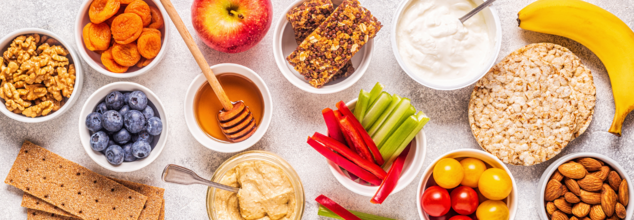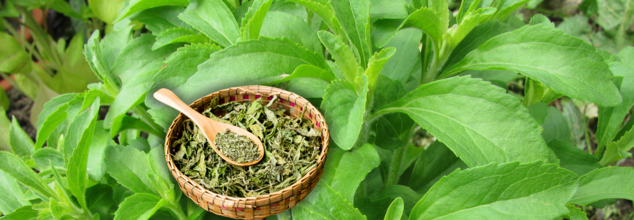- Health Conditions A-Z
- Health & Wellness
- Nutrition
- Fitness
- Health News
- Ayurveda
- Videos
- Medicine A-Z
- Parenting
- Web Stories
Do Low-Cal Snacks Help Your Weight Loss Journey?

Low-cal snacks (Credit-Canva)
Weight loss can be a very difficult journey for many people. It is not as simple as ‘eat less and exercise more’ as many people think it is, there are many aspects to it that people look over, or believe that if a person cannot lose weight, then it must be their own fault. Cutting down on your diet so spontaneously can cause serious damage to your physical health and many people even express how low and bad they felt during this time. Food plays a huge role in this mix of physical and mental health battle with weight loss and health.
Changing Habits for Weight
Even while you are losing weight, your body needs the sustenance to keep going! But if you drastically cut down on your food it can cause your body to go in a shock. The best way to go about this is to start making healthier changes in your diet instead of cutting down on amount only. If snacking is an issue, then try healthier snacks as they have their own benefits. You must change your habits and prioritize your health for a change. You can still enjoy some unhealthy foods from time to time but pay close attention to how your body feels after these meals. If you feel heavy and queasy, avoid these foods as you may get sick.
Why Healthy Snacks instead of No Snacks
Healthy snacks are a great way to help your body adjust to the new healthy foods' regime you start for your weight loss. Not only are these snacks easy to make, but they are healthy and can be a great help to kill the cravings you may be getting. It may take your body some time to get adjusted to the changes, but these will make the process much easier.
Make sure you speak to a healthcare professional or a nutritionist who can tell if what is good for you to try! These are the snacks you can whip up and enjoy your healthy-guiltfree food journey!
Greek Yogurt with Berries
If you like a sweet and tangy combo, then try the Greek yoghurt and berry combo! Greek yoghurt is not only a power packed protein rich snack, but it is also low calorie! Add your favourite pairings of berries in the mix to add sweetness and antioxidants to the mix.
Hard-Boiled Eggs
Not only are these low calories, but they are also low effort! Hard boiling an egg is a great source of protein and healthy fats as well as easy to prepare! You can also add these crushed in a sandwich and enjoy a hearty meal!
Apple Slices with Almond Butter
While apple pie is a great snack, it is not exactly the most healthy! To have the healthier version while still enjoying the goodness, you can try having apple slices with crunchy and creamy almond butter. Almond butter also offers healthy fats and protein to the body!
Cucumber Sticks with Hummus
Cucumber not only refreshes us as we eat but is a great source of fibre when paired with humus! Theis crunchy snack is easy to enjoy and offers the refreshing taste of a cucumber along with the creamy humus dip!
Popcorn (Air-Popped)
Snacking while watching a movie is one of the best parts of it! But not all movie snacks are healthy. If you wish for a healthier alternative, try air-popped popcorn as it is not only low calorie but also fibre rich!
Celery Sticks with Peanut Butter
Another refreshing yet crunchy combo includes celery sticks dipped in to peanut butter. While celery is a fibre-rich vegetable, adding peanut butter to the mix adds protiens and healthy fats to your diet!
Cottage Cheese with Fruit
This is a bit more obscure choice, but a fine pairing where you can enjoy the saft cottage cheese with a sweet fruit and make a sweet yet savoury combo to enjoy! Cottage cheese is a great source of calcium and protien which add a great mix to the healthy snack!
Best Sugar Alternatives That Taste Great And Keep Blood Sugar In Check

Credits: Canva
Sugar isn’t the villain it’s often made out to be, your body needs sugar or more accurately, glucose to function. It fuels your brain, muscles, and daily movement. But like anything, too much of the wrong kind can create problems. Most of us aren’t overdoing it on fruit or dairy, we’re consuming added sugars through sodas, desserts, sauces, and even foods marketed as “healthy.”
According to the American Heart Association, the daily limit should be about six teaspoons of sugar for women and children over two, and nine teaspoons for men. Most people far exceed that without even realizing it.
So the goal isn’t total elimination — it’s about smart substitution. Enter the world of sugar alternatives: sweeteners that offer the same satisfaction but with fewer calories, less blood sugar disruption, and even some added health benefits. But not all are created equal. Let’s break down which substitutes actually taste good, mimic sugar's texture, and — most importantly — are good for your health.
What is Wrong With Added Sugar?
The issue with added sugar isn’t just about weight gain. Excess intake of processed sugars (think high-fructose corn syrup or ultrarefined white sugar) is linked to a laundry list of chronic health problems: obesity, type 2 diabetes, fatty liver disease, hypertension, and inflammation, to name a few.
Sugar in fruit, vegetables, and dairy is naturally paired with fiber, vitamins, and other nutrients — it digests more slowly and doesn’t hit your bloodstream like a freight train. But added sugars? They spike insulin, crash your energy, and over time, put serious stress on your system.
Best Tasting, Healthiest Sugar Substitutes
When we talk about sugar alternatives, we’re looking for two things:
Taste and texture that actually feel like sugar
A nutritional profile that doesn’t undermine your health
Here are the top contenders — all of which hold up in both flavor and function.
1. Allulose
Allulose is a rare sugar found in figs, raisins, and wheat. Chemically similar to fructose, it has 90% fewer calories than table sugar and doesn’t raise blood glucose or insulin levels. Its biggest advantage? It actually tastes and feels like sugar — no bitter aftertaste, no cooling effect. You can bake with it, stir it into coffee, or sprinkle it over fruit without noticing a difference.
Early studies even suggest allulose might support weight loss and reduce belly fat. It’s also been shown to have antioxidant and anti-inflammatory properties. A win all around.
2. Monk Fruit
Derived from the luo han guo plant, monk fruit extract is naturally sweet and up to 200 times sweeter than sugar, yet it contains zero calories and carbs. It’s often blended with erythritol to tone down the intensity and add texture. Monk fruit has no impact on blood sugar, making it an excellent option for people with diabetes.
Bonus: it contains antioxidant compounds known as mogrosides, which may have anti-inflammatory benefits. Just be sure to check the label — some blends contain additives or sugar alcohols that can cause digestive upset in sensitive people.
3. Stevia
Extracted from the leaves of the stevia rebaudiana plant, stevia is a calorie-free sweetener that’s been used in South America for centuries. It’s very sweet (up to 300x sweeter than sugar), so a little goes a long way. Stevia works well in beverages and desserts, though some people detect a mild aftertaste.
Health-wise, stevia has shown promise in lowering blood pressure, improving insulin sensitivity, and even aiding digestion. Look for organic or purified versions to avoid overly processed blends.
4. Xylitol
Found naturally in some fruits and vegetables, xylitol is a sugar alcohol with about 40% fewer calories than sugar. Its granular texture makes it ideal for baking, and it doesn’t spike blood sugar significantly. Best part? Xylitol has a proven benefit for dental health — it reduces cavity-causing bacteria in the mouth.
However, xylitol can cause digestive discomfort if consumed in large amounts. And it's toxic to dogs, so be cautious if you have pets at home.
5. Erythritol
Erythritol stands out for its crunchy texture, which closely mimics table sugar — especially in baked goods. It has zero calories and is usually well tolerated in small to moderate doses.
But here’s where things get complicated: a 2023 study raised concerns linking high erythritol levels in the blood to increased risk of heart attack and stroke. While the study didn’t prove causation, it’s a reminder that even “natural” sweeteners aren’t immune from scrutiny. For now, moderate use appears safe for most healthy individuals, but keep an eye on future research.
6. Agave Nectar
Agave syrup has a low glycemic index due to its high fructose content, meaning it won’t spike your blood sugar. It’s very sweet, so you only need a little. But overconsumption of fructose can increase triglycerides and raise your risk for fatty liver disease — so use sparingly.
7. Blackstrap Molasses
This byproduct of sugarcane processing is surprisingly nutrient-rich. It contains iron, calcium, potassium, magnesium, and antioxidants. It has a stronger, more bitter flavor than sugar but can work beautifully in marinades, baked goods, or as a natural iron supplement for vegetarians.
How to Cut Back on Sugar Without Feeling Deprived?
Even the best sugar substitute won’t help if you’re unknowingly consuming hidden sugars all day. Here are a few strategies to reduce your sugar intake while still enjoying sweet moments:
Get more sleep: Lack of sleep increases sugar cravings by disrupting your hunger hormones.
Read your labels: Sugar hides under names like dextrose, maltose, and syrup — especially in condiments, bread, and granola.
Rework your drinks: Swap sugary sodas for sparkling water, unsweetened tea, or low-sugar prebiotic sodas like Poppi or Olipop.
Rethink your coffee habit: Those flavored lattes are sugar bombs. Start dialing back and try cinnamon or vanilla extract instead.
Natural sweeteners can be part of a healthy lifestyle when used mindfully. They’re not a free pass to eat unlimited cookies — but they do let you indulge with less metabolic risk. Always choose the form that best fits your body, preferences, and dietary goals and health isn’t about zero sugar. It’s about knowing what you’re eating, enjoying it fully, and making smart swaps where it counts.
Coca-Cola To Launch Cane Sugar Version In US: Is It Really Healthier?

Credits: Canva, NYT via Redux
Coca-Cola has officially announced that it will introduce a cane sugar-sweetened version of its flagship soda in the United States this fall. The move has comes days after former President Donald Trump’s pre-emptive Truth Social post, has sparked both nostalgia and renewed debate about the health impacts of soda sweeteners.
The new cane sugar Coke will be sold alongside the existing version that uses high-fructose corn syrup (HFCS), a formulation the company has used since 1984. Diet Coke and Coke Zero, which use artificial sweeteners such as aspartame, will remain unchanged, reports Time.
Cane Sugar Is Coming, But Why Now?
In a statement issued during its second-quarter update, Coca-Cola said the addition is part of its “ongoing innovation agenda” aimed at offering consumers more choices to match changing tastes and dietary preferences.
“This addition is designed to complement the company’s strong core portfolio and offer more choices across occasions and preferences,” said Coca-Cola on Tuesday. CEO James Quincey, speaking on a call with investors, acknowledged Trump’s recent involvement.
“We appreciate the President’s enthusiasm for our Coca-Cola brand,” he said. “We are definitely looking to use the whole tool kit of available sweetening options.”
Coca-Cola with cane sugar isn’t new to American shelves. Mexican Coke, or MexiCoke, has long been popular for its glass bottle and “original recipe” using cane sugar. That version has gained a cult following since its U.S. import began in 2005.
Trump and the Push for “Real Sugar”
Trump, a well-known Diet Coke loyalist, reportedly drinking up to 12 a day during his presidency, surprised many by advocating for real cane sugar.
“I have been speaking to Coca-Cola about using REAL Cane Sugar in Coke in the United States, and they have agreed to do so,” Trump posted on July 16. “This will be a very good move by them. You’ll see. It’s just better!”
While the company has not confirmed if Trump’s advocacy influenced the rollout, his comments have intensified public interest in the ingredient change.
ALSO READ: Donald Trump Says Cane Sugar Is ‘Just Better’ Than Corn Syrup
The Health Debate: Is Cane Sugar Better Than Corn Syrup?
From a health standpoint, the switch has raised questions: Is cane sugar a healthier option than HFCS? According to experts, not really.
“For all practical purposes, they’re the same,” said Marion Nestle, nutritionist and professor emerita of food studies at New York University to Time. “They taste the same. They have the same number of calories. They do exactly the same things in the body. Everybody would be healthier eating less of both of them.”
High-fructose corn syrup became a staple sweetener in U.S. processed foods and beverages during the 1980s due to lower costs and a surplus of corn. But its use has declined over the past decade. According to the USDA, domestic production of corn syrup dropped nearly 20% from 2006 to 2016.
Despite the reduction, concerns about HFCS remain.
In April, Health and Human Services Secretary Robert F. Kennedy Jr. called sugar “poison” and described high-fructose corn syrup as “a formula for making you obese and diabetic.”
He praised food chains like Steak ’n Shake for switching to cane sugar Coca-Cola, saying it aligned with his campaign to “Make America Healthy Again.”
Consumer Choice or Clever Rebrand?
While the move might appeal to those who grew up drinking the pre-1984 formulation or prefer the taste of Mexican Coke, some nutritionists argue this is more of a branding play than a health initiative.
“There’s no nutritional upgrade happening here,” said a registered dietitian quoted in a recent AP report. “It’s just the same sugary drink, wearing a slightly more natural mask.”
Still, Coca-Cola’s introduction of cane sugar Coke reflects broader shifts in consumer preferences toward perceived “natural” ingredients, even when those ingredients carry the same health risks as their processed counterparts.
Whether cane sugar or HFCS, health professionals continue to stress moderation. Sugary drinks, regardless of sweetener type, have been linked to weight gain, metabolic issues, and increased risk of type 2 diabetes.
Often Avoided, Could Your 'Low-Cal' Artificial Sweetener Help Fight Cancer?

Credits: Canva
Artificial sweeteners tend to be grouped in one category: chemical, controversial, and suspicious. But one botanical sweetener—stevia—is challenging that assumption. New studies out of Hiroshima University indicate that stevia, when fermented with a particular bacterium found on banana leaves, could do more than make your coffee taste better. It might fight one of the most lethal types of cancer—pancreatic cancer.
That's correct. Researchers have found that fermented stevia not only kills cancer cells but kills them selectively while sparing healthy cells largely intact. And it does this with powerful antioxidant effects to boot. The possibilities are staggering, not only for sweetener doubters but for the future of cancer treatment.
Pancreatic cancer boasts one of the lowest five-year survival rates of any major cancer—less than 10%. It's advanced, tends to be detected late, and is notoriously incurable with surgery, radiation, and chemotherapy. As co-author Narandalai Danshiitsoodol had it, "Pancreatic cancer is very invasive and metastatic in nature. There's a need for effective anticancer agents—particularly those isolated from safe, natural origins."
Long prized as a calorie-free sweetener derived from the leaves of the Stevia rebaudiana plant, it can now potentially have a second life as a therapeutic agent.
What is The Role of Fermentation?
The innovation is in the processing of the stevia. Researchers took a strain of Lactobacillus plantarum—SN13T, to be specific, which is naturally found on banana leaves—to ferment stevia leaves. It's not your standard steeping process. The group optimized fermentation for 72 hours under oxygen-free conditions at 37°C.
They did this carefully. The fermented stevia leaf extract (FSLE) was then pitted against its non-fermented equivalent. The findings were extraordinary.
FSLE proved more lethal to pancreatic cancer cells (PANC-1) than plain stevia extract, but importantly, it caused very little damage to normal kidney cells—even at high concentrations. Such selectivity is unusual and much sought after in cancer studies, where most treatments find it difficult to distinguish between cancerous and normal tissue.
Benefits of Fermented Stevia
So what is so powerful about fermented stevia? The reason is chlorogenic acid methyl ester (CAME), a molecule formed through the fermentation process. While raw stevia includes chlorogenic acid, it's the microbial conversion—thanks to enzymes in the SN13T strain—that breaks it down into the much more potent CAME. Here's why CAME is so impressive:
Increased potency: It was more potent than chlorogenic acid having a lesser IC50 (concentration required to kill half the cancer cells)—119.1 µg/mL compared to 189.6 µg/mL.
Cell cycle arrest: CAME inhibited cancer cells from dividing by preventing them from progressing beyond the G0/G1 stage—the resting phase prior to cell division.
Apoptosis induction: It induced cell self-destruction, initiating a chain of signals that caused the cancer cells to die in a highly regulated process.
At the genetic level, CAME expressed "pro-death" genes such as Bax, Bad, Caspase-3, Caspase-9, and cytochrome c. It also increased expression of E-cadherin, a gene that prevents the spread of cancer cells, and suppressed Bcl-2, a gene that prevents cells from dying. That's not indiscriminate toxicity. It's a coordinated, targeted attack.
Cancer does not originate solely from renegade cells. Oxidative stress—a free radical imbalance in the body—contributes extensively to cancer development. Fermented stevia exhibited high antioxidant potential, with:
- 94% free radical scavenging against DPPH laboratory tests
- 75% scavenging against ABTS tests
- Comprotection of normal cells against oxidative damage, such as hydrogen peroxide treatment
Through its capacity to lower oxidative stress, FSLE could potentially protect normal tissues against injury and disease, including inflammatory conditions.
Up to now, all these findings are the result of laboratory experiments with cultured cells. But the research group is already preparing the follow-up: animal trials. These will provide a solution to the larger question—can fermented stevia extract be effective within the human body, with its intricate immune functions, digestive system, and metabolic processes?
"The current work significantly deepened the knowledge on the mechanism of action of the Lactobacillus plantarum SN13T strain," said Danshiitsoodol. "It also sheds new light on new research avenues on the possible utilization of probiotics as natural anti-tumor compounds."
That is to say, this isn't solely about stevia. It's about what occurs when we tap the power of fermentation—utilizing microbes to strengthen natural plant chemical compounds and open up new therapy potential.
Is It Time To Rethink Natural Sweeteners?
The debate over artificial sweeteners has been polarized for decades. Detractors say non-nutritive sweeteners throw off the microbiome, stimulate cravings, and may even increase cancer risk. But this study presents a compelling counterargument—when processed correctly, at least one natural sweetener could potentially combat cancer.
It is important to mention that there's no fermented stevia on the shelves, and we're not close to recommending it as a substitute for medicine but what this study does highlight is the wonderful potential of nature, science, and microbes collaborating.
All sweeteners are not created equal. Stevia, and particularly fermented stevia, may become so much more than a sugar substitute. It might someday be used to target aggressive-to-treat cancers such as pancreatic cancer, providing a natural, selective, and potentially safer therapeutic agent.
Additional studies are required—especially in animal models and ultimately in humans—but preliminary results look encouraging. Stevia is, at least for now, still a favorite zero-calorie sweetener for coffee, tea, and desserts. It may have much more to offer in the future.
© 2024 Bennett, Coleman & Company Limited

